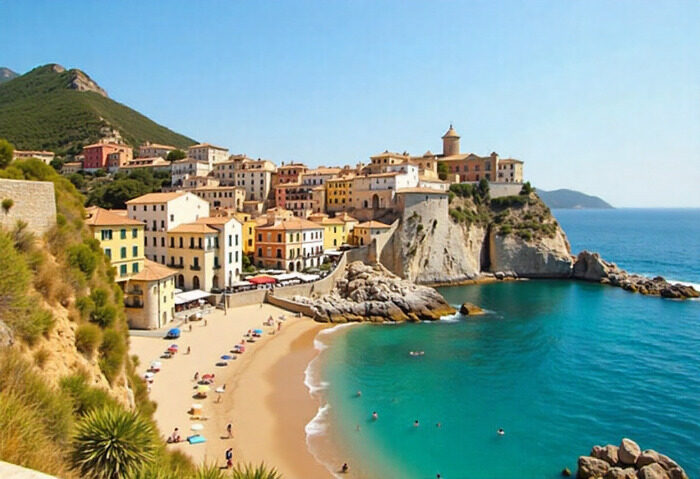Published on
October 10, 2025
Visitors from the U.S., UK, Germany, and France are playing a pivotal role in reshaping Spain’s tourism industry toward a sustainable, high-value model. These travelers, drawn to longer stays, higher spending, and culturally immersive journeys, are helping Spain move beyond traditional mass tourism while championing authentic local experiences. Their growing interest in gastronomy, heritage, and lesser-known destinations is boosting regional economies year-round and supporting Spain’s goal of harmonizing profitability with environmental and social responsibility.
Spain is actively redefining its tourism strategy, emphasizing sustainability, economic efficiency, and attracting high-value visitors, with the United States standing out as a key contributor to this transformation. As the country transitions from mass-tourism practices, long-haul travelers are becoming essential in achieving a balance between robust economic returns, environmental protection, and socially responsible tourism development.
The evolving framework focuses on encouraging travelers to stay longer, explore diverse regions, and increase their economic contribution. By prioritizing quality over sheer volume, Spanish authorities aim to ease overcrowding in popular destinations while elevating the visitor experience. This strategic shift underscores a long-term commitment to ensuring tourism growth enhances rather than compromises the nation’s natural landscapes, historic sites, and local communities.
U.S. Market Offers Strategic Stability
Long-haul visitors from the United States are particularly valuable due to their spending patterns and travel behaviors. Economic factors, including currency fluctuations and fiscal policy adjustments, are contributing to a trend of fewer but higher-spending tourists. This shift aligns perfectly with Spain’s goal of maintaining robust tourism revenue while mitigating the challenges of overcrowded hotspots.
The U.S. market also offers resilience against short-term global economic volatility, providing a steady source of demand that allows Spain to plan long-term strategies. By targeting travelers who are willing to invest in longer stays and immersive experiences, Spain can ensure that the tourism sector remains profitable while fostering environmental and cultural sustainability.
European Markets Show Mixed Performance
While the U.S. market demonstrates strong potential, traditional European markets present a more nuanced picture. In the United Kingdom, for instance, economic uncertainty and delayed financial approvals have influenced travel behavior, leading to shorter visits and an increase in last-minute bookings. This cautious approach reflects broader concerns about household budgets and discretionary spending.
France remains a stable source market, with domestic-style travel among families continuing to benefit Spain. Accessible destinations reachable by car allow French travelers to explore regions beyond conventional tourist centers, indirectly supporting Spain’s aim to disperse tourism benefits more evenly across the country.
Germany presents a more challenging scenario. Rising travel costs, ongoing corporate restructuring, and economic unpredictability have made travelers more conservative in their plans. While the desire to travel persists, affordability and timing considerations are shaping a cautious and deliberate approach to booking. This mixed performance highlights the importance of diversifying inbound tourism sources and reducing reliance on specific European markets.
Long-Haul Visitors as Catalysts for Sustainable Growth
The contrast between the performance of European markets and the United States underscores the strategic value of long-haul travelers. U.S. tourists, with their higher spending potential and interest in cultural and authentic experiences, align closely with Spain’s vision for a more selective and sustainable tourism sector. By attracting these travelers, Spain can foster year-round economic benefits, encourage exploration beyond major cities, and support the development of niche tourism segments such as gastronomy, heritage, and experiential travel.
This strategy represents a decisive move away from traditional sun-and-beach tourism toward diversified offerings that appeal to discerning visitors. By leveraging the strengths of the U.S. market, Spain can ensure that tourism growth is both economically and environmentally responsible, while also expanding opportunities for smaller towns and rural destinations.
Strategic Vision for the Next Decade
As Spain plans for the future of its tourism industry, long-haul markets like the United States are central to achieving sustainable growth. Encouraging extended stays, higher spending, and diversified travel patterns allows Spain to reduce congestion in traditional hotspots while increasing the overall value of its tourism sector.
The focus on sustainability, diversification, and resilience signals a commitment to evolving Spain’s tourism landscape responsibly. By fostering a balanced approach that emphasizes high-value experiences over sheer volume, Spain can deliver economic stability, environmental protection, and social benefits simultaneously.
Strategic alignment with long-haul markets is expected to play a decisive role in Spain’s ongoing transformation. By positioning the United States as a key partner in tourism development, Spain can accelerate its transition to a model that is more profitable, environmentally sustainable, and geographically balanced. This shift promises a high-quality experience for visitors while distributing economic benefits more equitably across the country, ensuring that tourism continues to contribute positively to local communities and the national economy.
